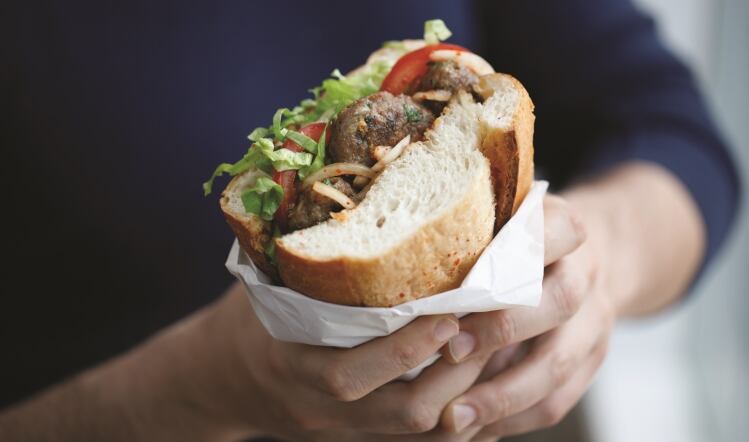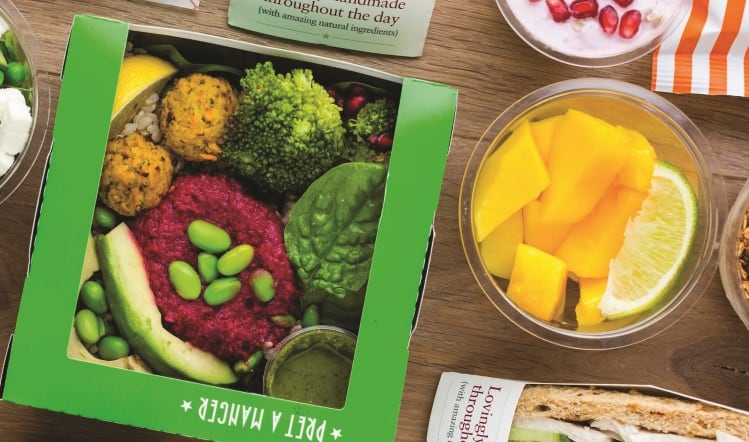September’s high-profile inquest into the death of teenager Natasha Ednan-Laperouse, who died in 2016 after eating a Pret A Manger artichoke, olive and tapenade baguette, looks increasingly like a watershed moment for the labelling of products containing allergens.
After coroner Dr Sean Cummings found that Pret was not “monitoring allergens seriously”, the Government announced it would review allergen labelling laws, hinting that in future, all packaged food – regardless of how it was prepared – would be required to have allergens declared on-pack.
However, the second Pret-linked fatality is likely to be the one that has got food firms thinking about their manufacturing processes. In October, the retail chain revealed it had been “mis-sold” dairy-free yogurt that was found to contain dairy protein, resulting in the death of 42-year-old Celia Marsh from an allergic reaction in December 2017.
The implicated supplier, CoYo UK, denied the yogurt it provided to Pret in December 2017 was linked to the batch it recalled in February 2018, adding that Pret’s refusal to supply a batch code had limited its ability to investigate further.
With so much press coverage generated by these incidents, concerns over food allergens have reached a new high, prompting the entire supply chain to review how they are managed and controlled.
“We have seen a lot more focus on allergen control since the issue gained media attention, particularly in the loose foods sector,” says Simon Flanagan, senior consultant for food safety and toxicology at research company Reading Scientific Services.
‘Seeking a deeper understanding’
“Companies are seeking a deeper understanding of the allergen profiles of the raw materials they purchase. This is heightened when purchasing ingredients that are then used to make products with a free-from claim.”
Despite being in the packaged market, West Yorkshire-based dessert maker Freaks of Nature, whose products come with a free-from egg, gluten, dairy and soya promise, has ramped up its allergen controls following the Pret cases.
“We have stepped up our supplier audits and asked them to notify us if they make any changes,” says company founder Peter Ahye. “We are making clear the reason we require ingredients to be free of certain allergens and are getting suppliers to sign-off on this to give us reassurance.”
In some ways, this greater focus on allergen control is more of an opportunity than a challenge for a company like Freaks of Nature, which operates its own factory as a dedicated free-from facility, with no dairy, eggs, gluten or soya brought onto the site.
Ahye says that when the firm supplies the supermarkets with branded products, they take “some, but not as much” interest in allergens as when products are being marketed under their own-label.
Where supermarket own-brands are potentially at stake, Ahye claims “it crops up in every conversation” and when selecting manufacturing partners, retailers are “increasingly looking for dedicated facilities to keep allergens out at source”.
“Most dairy-free products are produced in facilities that also handle dairy products. They follow cleandown procedures to avoid cross-contamination, but nothing is foolproof in this respect. More and more retailers are looking for suppliers with dedicated plants,” he says.
Free-from suppliers
Where possible, Freaks of Nature works with ingredient suppliers that adhere to its free-from policy, but Ahye admits it becomes trickier with gluten. “You often have ingredients that are naturally gluten-free but are being processed in a factory that handles a gluten product,” he says.
While gluten isn’t an allergen, Ahye’s comments touch on one of the inherent complexities of allergen control – just because a product complies with legal requirements for free-from labelling, it doesn’t necessarily mean it is ‘free from’. A product labelled ‘gluten-free’ can contain up to 20 parts per million of gluten.
In the absence of threshold levels for the 14 allergens covered by current legislation, ‘free-from’ means ‘no detectable allergen’ according to the best analytical testing methods. So, the validity of a free-from claim is limited by the quality of testing available.
With all product tests, there is a limit to how low the allergen level can be before the test can no longer detect its presence, says Verity Clifton, applications technologist at ingredients firm Thew Arnott.
“Manufacturers can only say ‘we have found no more than ‘X’ quantity in our product’, which by general consensus makes it free from this allergen,” she adds. “There is then the chance of a consumer having a greater sensitivity to the allergen than the manufacturer can test for, resulting in a free-from product causing an allergic reaction.”
But with this area in constant evolution, Clifton predicts advances in allergen detection technology, coupled with a deeper understanding of the levels considered safe, will lead to adjustments to acceptable levels in the future.
“As we gain a better understanding of ‘safe limits’ for each allergen, manufacturers will review their risk assessment procedures to see if there is anything else they can do to comply with the agreed-upon levels,” she says.
However rigorous the procedures and controls at food and ingredient manufacturing plants, an element of risk will always remain. “There will always be a cross-contamination risk, especially in multi-component and complex products – no procedure is foolproof,” says Clifton.
Reformulation
One risk mitigation strategy for undeclared allergens that applies equally to free-from and mainstream foods is to formulate them out of recipes altogether, suggests Flanagan. “The most effective way to manage an allergen is not to have it there in the first place.”
He argues that manufacturers need to question the benefit of having an allergen and whether it could be substituted for a non-allergenic ingredient.
Clean-label ingredient producer Ulrick & Short says its new product development team has been focusing on allergen removal for several years, yielding a variety of alternative options.
“Ovaprox can replace 100% of egg in applications such as cakes, muffins, waffles and pancakes,” says Robert Lambert, the firm’s marketing and communications chief.
“Our delyte range of fat replacers offers gluten-free alternatives to all dairy fats, while still maintaining texture and indulgence, and our synergie and scilia ranges of functional starches and fibres offer gluten-free alternatives in bakery.”
Ultimately, though, there is no substitute for tight allergen controls based on a systematic risk assessment. “It’s about ensuring the systems are robust enough that if an allergen is deliberately part of the formula, it will be clearly labelled and available to the consumer before point of sale,” concludes Flanagan.
It seems, then, that any change in allergen labelling laws will be a positive one.




